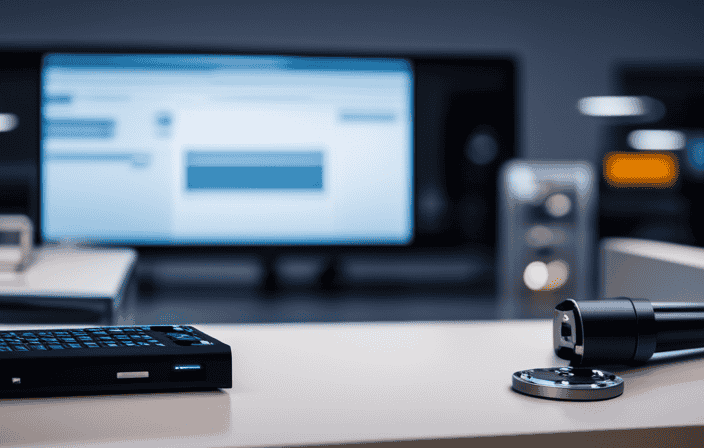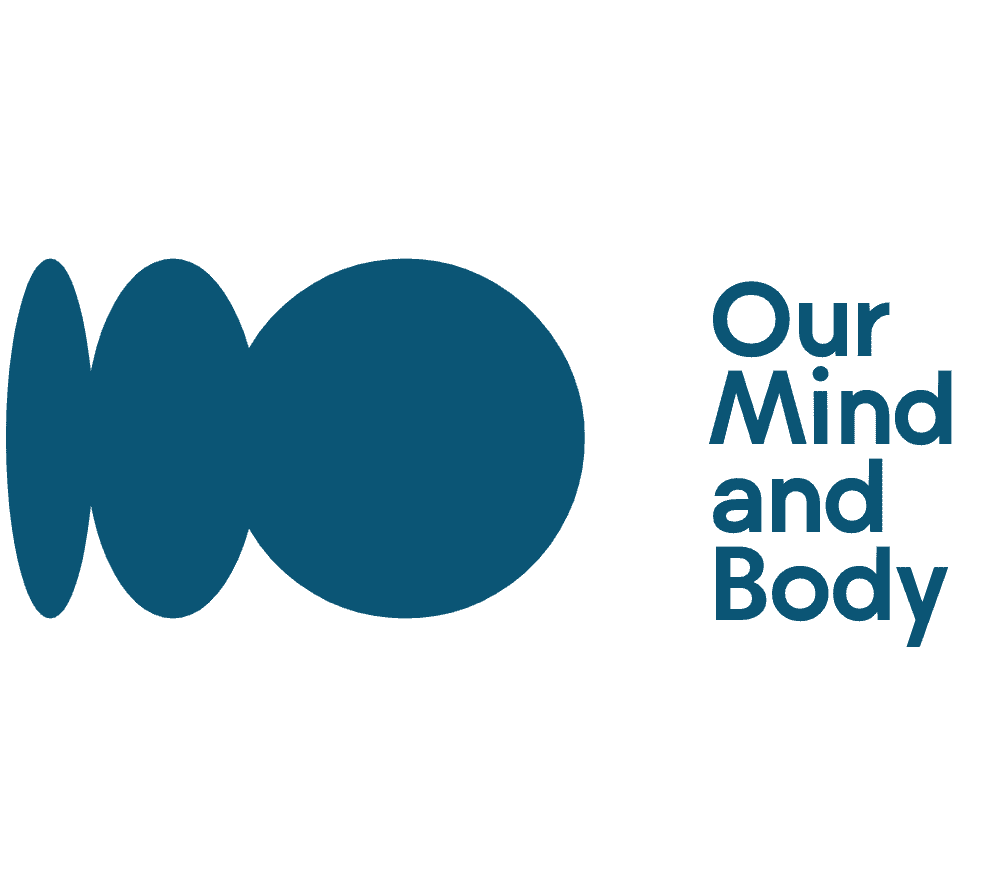Inspiration
Free Thinker – How This Power Word Can Make You Better

I’ve always found the concept of free thinking captivating. This phrase has evolved in its meaning over time, yet fundamentally, it signifies the capability to think creatively, question traditional beliefs, and welcome novel perspectives.
As someone who values personal growth and development, I believe that free thinking is an essential tool for success in all areas of life.
In this article, we will explore what it means to be a free thinker and how embracing this mindset can make you better. We’ll discuss the benefits of free thinking, including increased creativity and confidence, as well as how it can help you overcome limiting beliefs and become more open-minded.
By the end of this article, you’ll have a better understanding of what it means to be a free thinker and how you can apply this powerful concept to your daily life for personal and professional growth.
Key Takeaways
- Free thinking is essential for personal growth and development as it promotes creativity, problem-solving skills, and resilience.
- It allows individuals to challenge assumptions, question beliefs, and seek out new ideas, leading to innovation and progress.
- Incorporating free thinking into interpersonal relationships involves effective communication, healthy boundaries, and mutual respect.
- Free thinking improves decision-making processes, allows for creativity in problem-solving, and can lead to better outcomes in the workplace.
Defining Free Thinking
If you’re curious about what it really means to be a free thinker, let’s break it down. Free thinking is the act of considering new ideas and information without being constrained by traditional beliefs or societal norms. It’s about having an open mind and the ability to question established thought patterns.
The importance of free thinking in decision making cannot be overstated. When we limit ourselves to conventional ways of thinking, we miss out on potential opportunities for growth and development. By embracing free-thinking, we open ourselves up to new possibilities that may not have been previously considered.
Furthermore, free-thinking can lead to innovation and progress. Many of the greatest inventions and advancements in history have come from individuals who dared to think outside the box and challenge existing ideas. By cultivating a mindset of free-thinking, we can push boundaries and pave the way for meaningful change in our lives and communities.
By understanding what free-thinking means, its importance in decision-making, as well as how it can lead to innovation and progress – we gain valuable insight into why this power word is so important for personal growth and development.
With this foundation laid out, let’s move on to explore some of the benefits that come with being a free-thinker!
Benefits of Free Thinking
By embracing new perspectives and challenging the status quo, you can unlock doors to creativity and innovation that were previously closed. It’s like discovering a hidden key that unlocks a door you never knew existed. This is the power of free thinking: unlocking potential and breaking barriers that limit our growth and progress.
Free thinking allows us to explore uncharted territories without fear of judgment or criticism. It encourages us to challenge assumptions, question beliefs, and seek out new ideas. By doing so, we open ourselves up to a whole world of possibilities that were once unimaginable.
The benefits of free thinking are numerous, but some examples include:
- Increased creativity: By exploring new paths and taking risks, we expand our imagination and find innovative solutions.
- Improved problem-solving skills: Free thinkers are able to analyze situations from multiple angles, leading to more effective problem-solving.
- Enhanced personal growth: When we break free from limiting beliefs and embrace new ideas, we become more self-aware and better equipped for personal development.
- Greater resilience: Free thinkers are adaptable in the face of change because they’ve developed the ability to think outside the box.
Incorporating free thinking into your life can be transformative, allowing you to achieve things you never thought possible. So why not take that first step towards embracing the unknown?
Embracing the Unknown
Embracing the unknown can lead to unexpected opportunities and growth, allowing us to break free from our comfort zones. Exploring uncertainty opens up new doors that we may have never thought possible before. It requires a willingness to take risks and face challenges head-on, but the potential rewards are immense.
When we embrace new perspectives, we open ourselves up to a world of possibilities. By stepping outside of our own preconceptions and biases, we allow ourselves to see things in a different light. This shift in mindset can lead to creative breakthroughs and solutions that we may have never considered before.
In order to fully embrace the unknown, it’s important for us to remain curious and open-minded. Being receptive to new ideas and experiences allows us to expand our knowledge and understanding of the world around us. As we continue down this path, exploring uncertainty becomes less daunting as our confidence grows with each step forward into the unknown.
Building Confidence
When it comes to building confidence, I believe in trusting my own decisions. It’s important to listen to advice and gather information, but ultimately the choice is mine to make.
Another key aspect of confidence is standing up for what you believe in, even if it’s unpopular or goes against the norm.
And finally, speaking your mind is crucial – not only does it assert your beliefs and values, but it also shows that you’re confident and knowledgeable about the topic at hand.
Trusting Your Own Decisions
Trusting your gut can be a game-changer in making decisions that align with your values and beliefs, giving you the confidence to stand by your choices like a rock. It’s important to trust yourself and know that you have the power to make autonomous choices without seeking validation from others.
Here are four reasons why trusting your intuition can lead to better decision-making:
- Intuition is based on past experiences and knowledge.
- Your intuition can sense things beyond what your logical mind can comprehend.
- Trusting your intuition helps you stay true to yourself.
- It allows you to take risks and pursue opportunities that may not make sense logically, but feel right in your heart.
Trusting our own decisions is a powerful tool for personal growth and development. When we learn to listen to our inner voice, we become more confident in ourselves and our abilities. This newfound confidence enables us to stand up for what we believe in, even if it means going against the grain or challenging societal norms – which will be discussed further in the upcoming section about standing up for what you believe in.
Standing Up for What You Believe In
Standing up for your beliefs requires courage and conviction, but it can lead to positive change in society. It means advocating for change and standing up for yourself when others may not agree with you. It can be difficult to speak out against the norm or challenge the status quo, but doing so can make a difference.
To visualize this concept, consider the following table:
| Standing Up For Beliefs | Potential Outcomes |
|---|---|
| Risk of Conflict | Positive Change |
| Advocating for Change | Challenging Status Quo |
| Confidence in Convictions | Making a Difference |
This table highlights how standing up for your beliefs can result in potential conflicts but also bring about positive change and challenge established norms. Having confidence in your convictions is key to making a difference and advocating for change. In the end, taking action towards what you believe in will always be more impactful than remaining silent.
Transitioning into the next section about ‘speaking your mind’, it’s important to note that being able to stand up for yourself often involves speaking your mind.
Speaking Your Mind
Expressing yourself through words can be an empowering way to convey your thoughts and feelings. It allows you to be heard and understood by others, which is crucial in personal growth and social dynamics.
When you speak your mind, you demonstrate confidence in your opinions and ideas, creating a positive impact on those around you. However, speaking up can also come with its challenges. Fear of rejection or judgment may hold you back from expressing yourself fully.
But the more you practice speaking your mind, the easier it becomes over time. By using free-thinking as a tool for self-expression, you can learn how to communicate effectively while staying true to yourself. This will not only improve your relationships but also enhance your creativity skills as well.
Developing Creativity
You can enhance your creativity by actively seeking out new experiences and exploring different perspectives. According to a study conducted by the University of Amsterdam, exposure to diverse ideas leads to greater creative thinking. Exploring curiosity and unlocking imagination are key factors in developing one’s creativity.
To cultivate creativity, it’s important to step outside of one’s comfort zone. This could mean trying new foods or taking up a new hobby. By challenging oneself to experience something unfamiliar, it creates an opportunity for growth and inspiration.
In addition, engaging with individuals from diverse backgrounds can also expand one’s perspective and ultimately lead to increased creativity. Listening and learning from others’ unique stories and worldviews can spark fresh ideas that may have never been considered before.
Developing creativity requires active participation in exploring the world around us, embracing curiosity, and opening ourselves up to new possibilities.
Developing critical thinking skills is another important aspect of becoming a free thinker. It involves analyzing information objectively, questioning assumptions, and considering multiple perspectives before making decisions or forming opinions. By enhancing both our creative thinking abilities as well as our critical thinking skills, we become better equipped to navigate life’s challenges with confidence and innovation.
Enhancing Critical Thinking
Enhancing critical thinking skills is crucial for navigating life’s challenges with confidence and innovation. Analyzing assumptions and challenging biases are two key components of this process. By becoming more aware of the underlying beliefs that influence our thoughts and actions, we can make more informed decisions and avoid falling into patterns of irrationality.
To analyze assumptions, it’s important to ask questions that challenge the status quo. Instead of accepting something as true simply because it has always been done that way, we should be open to new ideas and perspectives. This means taking a step back from our own preconceived notions and considering other options before making a decision.
Challenging biases involves recognizing the limitations of our own experiences and seeking out diverse viewpoints. We all have unconscious biases based on factors like race, gender, or socio-economic status. By actively seeking out perspectives that differ from our own, we can broaden our understanding of the world around us and become more inclusive in our thinking.
Ultimately, enhancing critical thinking skills allows us to approach problems with greater clarity and creativity, leading to more effective solutions.
By encouraging open-mindedness in ourselves and others, we can continue to expand our understanding of the world around us. Whether it’s through exposure to new ideas or engaging in thoughtful dialogue with those who hold different views than ours, there are numerous ways to cultivate an open mind.
The next step is putting these skills into practice by challenging assumptions and biases in order to approach problems with greater clarity and creativity – ultimately leading towards growth both personally and professionally.
Encouraging Open-Mindedness
When you stumble upon new ideas that challenge your current beliefs, it can be an exciting opportunity to expand your perspective and grow as a person. Encouraging open-mindedness is essential in promoting diversity and practicing empathy towards others.
Being able to consider different viewpoints allows us to understand the world from various perspectives and engage in more meaningful conversations with people who come from different backgrounds. To become a free thinker, we must learn to appreciate the value of diverse opinions. We need to acknowledge that our experiences shape our beliefs, but they do not dictate what is right or wrong for everyone else.
When we listen with an open mind without judgment or bias, we increase our understanding of other people’s experiences and challenges. Moreover, practicing empathy helps us connect with others on a deeper level by allowing us to put ourselves in their shoes. This exercise encourages us to think beyond ourselves and develop compassion for those whose experiences differ from ours.
Through this approach, we can create a more inclusive society where differences are celebrated instead of feared or rejected. Overcoming limiting beliefs is the next step towards becoming a free thinker; let’s explore how challenging them can benefit us even further.
Overcoming Limiting Beliefs
Imagine how liberating it would feel to break free from self-imposed limitations and embrace new possibilities. We often hold ourselves back with limiting beliefs that stem from past experiences, societal norms, or self-doubt. Overcoming these barriers is essential in becoming a free thinker and unlocking our full potential.
One way to overcome self-doubt is by acknowledging our strengths and accomplishments. We tend to focus on our weaknesses and failures, which can lead to negative self-talk and hinder our progress. By shifting our mindset towards positive affirmations, we can build confidence in ourselves and trust in our abilities.
Challenging societal norms is another crucial aspect of overcoming limiting beliefs. Society often dictates what we should do or be, leading us down a path that may not align with our true desires. Breaking away from these expectations allows us to explore different options and create a life that suits us best.
| Limiting Beliefs | Truths | Actions |
|---|---|---|
| I’m not good enough | Everyone has strengths and weaknesses | Identify strengths and work on weaknesses |
| I can’t change my situation | Change is always possible if you take action | Set goals and take small steps towards them |
| I have to follow the norm | There’s no one-size-fits-all approach to life | Explore different options before making decisions |
| Failure means I’m a failure | Failure is an opportunity for growth | Learn from mistakes and try again |
Overcoming limiting beliefs takes time, effort, and commitment. It requires us to step out of our comfort zones, challenge ourselves, and embrace uncertainty. But the rewards are worth it – we become more confident, open-minded individuals who are capable of achieving great things.
As we continue on our journey as free thinkers, applying this mindset in daily life becomes crucial. We’ll explore ways to make this happen in the next section without losing sight of the progress we’ve made in overcoming our limiting beliefs.
Applying Free Thinking in Daily Life
Making decisions, problem-solving, and building strong interpersonal relationships are all important aspects of daily life that can greatly benefit from free thinking.
As a free thinker, I’m able to approach decision-making with an open mind and consider all possible options before making a choice.
When faced with problems, free thinking allows me to explore creative solutions and think outside the box.
In my relationships with others, free thinking helps me to communicate effectively and understand different perspectives.
Making Decisions
You’ll feel more confident and empowered to make tough decisions once you embrace your identity as a free thinker. Free thinking encourages analyzing consequences and evaluating options before making a decision. This approach can help you balance logic and intuition, enabling you to consider all aspects of the situation.
When facing a decision, start by gathering information about the possible outcomes of each option. Consider both short-term and long-term consequences. Next, evaluate each option using logic, but also trust your gut instinct.
Once you have weighed all factors, make a decision that aligns with your values and goals. By applying these principles of free thinking to your decision-making process, you can feel confident in your choices. With this confidence comes the ability to tackle problems head-on; read on for tips on how to apply free thinking in problem-solving situations without getting stuck!
Problem-Solving
To effectively solve problems, it’s important to analyze the situation and consider all possible solutions. Brainstorming techniques can be useful in this process, as they encourage free thinking and creativity.
One such technique is mind mapping, where you draw a central idea in the middle of a page and branch out with related thoughts and ideas. Another technique is SWOT analysis, which stands for Strengths, Weaknesses, Opportunities, and Threats. This involves analyzing these four areas to identify potential solutions or strategies.
Implementing free thinking in the workplace can lead to better problem-solving outcomes and foster innovation. It allows employees to think outside the box and come up with unique solutions that may not have been considered otherwise. When encouraged by management, free thinking can create a positive work environment that values creativity and encourages personal growth.
By incorporating brainstorming techniques into problem-solving processes, individuals can develop new skills and improve their ability to overcome obstacles both at work and in their personal lives.
As we move onto discussing interpersonal relationships, it’s important to remember that effective communication plays a crucial role in resolving conflicts with others.
Interpersonal Relationships
Building strong interpersonal relationships is like oiling the gears of a machine, it keeps everything running smoothly. Effective communication is key to building these relationships. It’s important to listen actively and respond thoughtfully, taking into account the other person’s perspective.
It’s also crucial to express oneself clearly and respectfully, without attacking or belittling the other person.
In addition to communication skills, building healthy boundaries is essential for maintaining positive interpersonal relationships. Boundaries help us establish what we are comfortable with and what we are not willing to tolerate. They allow us to protect ourselves from being taken advantage of or mistreated, while still showing respect for others.
By communicating our boundaries clearly and enforcing them appropriately, we can foster trust and mutual respect in our relationships.
By incorporating effective communication skills and healthy boundaries into our interpersonal relationships, we can create a strong foundation for personal and professional growth.
Conclusion: Embracing Free Thinking for Personal and Professional Growth
Ultimately, embracing free thinking can lead to significant personal and professional growth. When we allow ourselves to explore new ideas and perspectives, we open ourselves up to a world of possibilities.
Free thinking can improve decision making by encouraging us to consider all options and weigh the pros and cons before making a choice. It helps us break away from rigid ways of thinking and allows for creativity in problem-solving.
Free thinking is also a tool for innovation and progress. By questioning the status quo, we can identify areas that need improvement or find new solutions to existing problems. It allows us to see beyond what has already been done and opens up opportunities for growth and development.
Embracing free thinking requires courage to challenge conventional wisdom, but it is this mindset that separates leaders from followers.
Incorporating free thinking into our lives takes practice, but the benefits are worth it. We become more adaptable, resilient, and confident in our abilities as we learn how to navigate through unknown territories.
It’s not about rejecting established beliefs entirely but rather expanding our minds to include different perspectives. By embracing free thinking, we can create positive change both personally and professionally, allowing us to reach our full potential as individuals.
Frequently Asked Questions
What is the history of free thinking and how has it evolved over time?
Funny how you asked about the history of free thinking, ’cause I was just reading about that yesterday!
The concept of free thinking dates back to ancient Greece, where philosophers like Socrates and Plato encouraged critical thinking and questioning authority.
Throughout history, there have been many influential free thinkers who challenged the status quo and paved the way for progress in various fields.
Thinkers like Galileo, Darwin, and Freud all faced backlash for their unconventional ideas but ultimately changed the course of science and society.
Today, free thinking is still valued as a way to promote innovation and individuality.
How does free thinking differ from simply being rebellious or contrary?
When considering the difference between rebelliousness and free thinking, it’s important to note that while both may involve challenging authority or accepted norms, the motivation behind each is different.
Rebellious behavior often stems from a desire to simply go against the grain or act out for attention, whereas free thinking involves questioning established beliefs and seeking truth through independent thought.
The benefits of free thinking in decision making are numerous – it allows for greater creativity, critical thinking skills, and a broader perspective on complex issues.
By approaching problems with an open mind and willingness to challenge assumptions, individuals can make more informed choices that benefit not only themselves but society as a whole.
Are there any risks or downsides to free thinking, such as being ostracized or criticized?
When it comes to free thinking, there are definitely some risks and downsides. Depending on the situation, being a free thinker can lead to ostracization or criticism from others who may not agree with your ideas or perspective.
However, there are also numerous benefits to free thinking, such as the ability to think creatively and critically about problems and situations. Coping strategies for dealing with any negative reactions could include finding like-minded individuals who support your ideas, staying true to yourself and your beliefs, and being open to constructive feedback from others.
Ultimately, while there may be some challenges associated with free thinking, the rewards of embracing this mindset can be well worth it in the end.
How can someone who is naturally more analytical or logical develop their free thinking skills?
When it comes to developing free thinking skills, those who are naturally more analytical or logical may need to focus on analyzing assumptions and practicing open mindedness.
One way to do this is by questioning assumptions that are often taken for granted. This can mean challenging traditional beliefs or considering alternative perspectives.
Practicing open mindedness can also help individuals expand their thinking and consider different viewpoints without immediately dismissing them. It’s important to approach new ideas with curiosity rather than judgment.
By incorporating these practices into their daily lives, even those who tend towards a more structured way of thinking can improve their ability to think freely and creatively.
Can free thinking be applied in a team or group setting, and if so, how can it be effectively integrated?
When it comes to decision making in a group setting, free thinking can be incredibly beneficial. By encouraging everyone to think outside the box and consider multiple perspectives, you can arrive at more creative and well-rounded solutions.
However, getting everyone on board with this mindset can sometimes be a challenge. One strategy is to set ground rules that explicitly encourage free thinking and discourage judgment or criticism of ideas. It’s also important to create an environment where people feel comfortable sharing their thoughts without fear of being shut down or ridiculed.
Additionally, providing opportunities for brainstorming or idea-generating sessions can help spark new ways of thinking among team members. Ultimately, by embracing free thinking in a group setting, you have the potential to unlock untapped creativity and improve the overall quality of your decision-making process.
Conclusion
So, there you have it – the power of free thinking. By embracing this approach to life, we can experience numerous benefits in all aspects of our personal and professional growth.
From building confidence and creativity to encouraging open-mindedness and overcoming limiting beliefs, there is no end to what free thinking can offer.
In fact, did you know that according to a study by Forbes, companies that prioritize creativity in their work environment are 3.5 times more likely to outperform their competitors? This statistic alone should be enough to convince us of the importance of free thinking in our daily lives.
Let’s start embracing the unknown and breaking down those mental barriers that hold us back from reaching our full potential. With an open mind and a willingness to explore new ideas and perspectives, we can become better individuals and make a greater impact on the world around us.
Meet Kiran, the guiding light of wisdom behind the empowering content at OurMindAndBody.com. As a talented and compassionate writer, Kiran weaves words with grace and insight, sharing profound knowledge and practical advice to inspire positive transformations in the lives of readers.
With a background in psychology and a deep-rooted passion for well-being, Kiran brings a unique blend of expertise and empathy to her writing. Her journey into the realm of mindfulness, meditation, and yoga began as a personal quest for self-discovery and healing. Having experienced the profound benefits of these practices firsthand, Kiran is committed to empowering others to embark on their own journeys of self-exploration and growth.
Inspiration
The Power Of Crystals: Manifest Your Dreams

Crystals, akin to dazzling jewels woven into the universe’s fabric, possess the ability to unleash our dreams and bring our most profound wishes to life. As we begin our path toward manifestation, the universe’s wisdom and the gentle oscillations of crystal energy lead us.
These sacred stones, when carefully arranged in crystal grids, become conduits for our intentions, amplifying our energy and aligning us with the magic of manifestation.
In this article, we will explore the enchanting power of crystals and discover how they can help us manifest our dreams.
Key Takeaways
- Crystals raise vibration and align desires, speeding up the manifestation process.
- Reusing crystal grids for multiple manifestations is possible through effective cleansing and clearing.
- Different types of crystals can be used in combination to enhance the effectiveness of manifestation.
- Various methods, such as carrying crystals or making crystal elixirs, can be used to incorporate crystals into the manifestation process.
The Power of Crystals: Manifest Your Dreams
I trust in the power of crystals to manifest my dreams by raising my vibration and aligning my desires with the energy of the Universe. Crystals have a profound effect on my manifestation journey, as they speed up the process and enhance the effectiveness of my intentions.
By using crystal grids, I can reuse them for multiple manifestations, ensuring continued success. I cleanse and clear my crystals after each manifestation, keeping their energy pure and potent. The selection of different crystals for my grids is important, as they complement each other and enhance the overall effectiveness.
I carry crystals with me, place them under my pillow, and even make crystal elixirs to amplify their power. Cleansing and clearing my crystals regularly maintains their effectiveness, while trusting the process and having patience allows my manifestations to unfold in divine timing.
Harnessing the energy of crystals empowers my manifestation efforts and aligns me with my desired outcomes.
Effectiveness of crystal manifestation
Trusting in the process of manifestation allows desired outcomes to unfold naturally. When it comes to using crystals for manifestation, I have found that they are incredibly effective in raising my vibration and aligning my desires with the universe. The power of crystals lies in their ability to speed up the manifestation process and enhance the effectiveness of my intentions. By choosing crystals that complement each other and creating crystal grids, I am able to harness their energy and support multiple manifestations. Cleansing and clearing the crystals after each manifestation is crucial to maintain their effectiveness. Additionally, carrying crystals with me, placing them under my pillow, or even making crystal elixirs have all been effective methods for using crystals in my manifestation practice. Trusting in the power of crystals and the process of manifestation has brought me the desired outcomes I have been seeking.
| Trust in the Process | Effective Cleansing | Different Crystal Types |
|---|---|---|
| Allows desired outcomes to unfold naturally | Maintains crystal effectiveness | Complement each other |
| Raises vibration and aligns desires | Removes unwanted energies | Multiple combinations possible |
| Speeds up the manifestation process | Ensures continued effectiveness | Supports intentions |
Through trust, patience, and the power of intention, I have seen how crystals can greatly enhance the manifestation process. Their energy aligns with my intentions and acts as a magnet for my dreams. By raising my personal vibration, I am able to attract the desires that I seek. It is important to have faith in the unseen workings of the universe and trust in the timing of manifestation. With consistent cleansing and regular maintenance, the energy of the crystals remains refreshed and ready to support my manifestation efforts. Harnessing the power of crystal vibrations has truly empowered my manifestation journey.
Reusing crystal grids
By reusing crystal grids, I am able to maximize their effectiveness and support multiple intentions. Cleansing and clearing the crystals after each manifestation ensures their continued potency and ability to align with different desires. I believe that grids hold unique energy imprints from previous manifestations, making them versatile tools for manifesting dreams. I find that effective cleansing rituals, such as using sage or sound vibrations, remove any unwanted energies and refresh the crystals’ energy. This allows the grids to support various intentions and amplify their manifestation power. I trust in the Universe’s guidance and the inherent wisdom of these crystals, knowing that they will align with my intentions and accelerate the manifestation process. Reusing crystal grids is a powerful way to harness their energy and manifest my dreams.
Using different crystal types
Using a variety of crystal types enhances the effectiveness of my manifestation grids. Each crystal carries its own unique energy and vibration, and when combined, they create a powerful synergy that supports my intentions. As I select different crystals for my grids, I consider their properties and how they complement each other. I trust my intuition to guide me in choosing the right combination for my specific desires.
To help you understand the power of different crystal combinations, I have created a table below:
| Crystal Types | Properties | Intention |
|---|---|---|
| Clear Quartz | Amplifies energy, enhances clarity | Manifesting abundance |
| Rose Quartz | Opens the heart, attracts love | Manifesting loving relationships |
| Citrine | Encourages optimism, attracts prosperity | Manifesting success and abundance |
| Amethyst | Enhances spiritual connection, promotes intuition | Manifesting spiritual growth |
| Selenite | Cleanses energy, promotes clarity | Manifesting divine guidance |
By incorporating these crystals into my manifestation grids, I am able to align my energy with my intentions and accelerate the manifestation process. Each crystal type brings its own unique energy, amplifying my desires and helping me manifest my dreams with greater ease and flow.
Various ways to use crystals
One way I incorporate crystals into my daily life is by carrying them with me wherever I go. I believe that the energy of crystals can support and enhance my intentions and manifestations.
As I hold them close to me, their vibrations align with my own, raising my energy and attracting my desires. Whether it’s a small crystal in my pocket or a crystal pendant around my neck, I feel their presence guiding and protecting me throughout the day.
It’s a constant reminder to stay aligned with my intentions and trust in the process of manifestation. Carrying crystals with me allows me to infuse my daily activities with their powerful energy, helping me stay focused and connected to my dreams.
Importance of cleansing crystals
Cleansing my crystals regularly is essential to maintaining their effectiveness and ensuring optimal results in my manifestations. I understand that crystals absorb energy from their surroundings, and it is important to clear any unwanted or negative energies that they may have picked up.
By cleansing my crystals, I am able to restore their natural vibrational frequencies and align them with my intentions. I believe that consistent cleansing allows the crystal energy to be refreshed and revitalized, enhancing the manifestation process.
I approach this practice with a holistic and spiritual mindset, knowing that by nurturing and honoring my crystals, I am creating a sacred space for my dreams to manifest. Cleansing my crystals is a sacred ritual that I embrace wholeheartedly, knowing that it is an integral part of harnessing their power for my manifestations.
Enhancing manifestation with crystal vibrations
Enhancing my manifestation journey, I embrace the powerful vibrations emitted by crystals. These divine gemstones possess an innate ability to elevate my personal vibration, aligning it with my intentions and desires. As I immerse myself in their energy, I become a magnet for my dreams, attracting them with ease and grace. The crystals act as catalysts, accelerating the manifestation process and amplifying my intentions. I feel a deep sense of connection and harmony as their vibrations resonate within me, creating a sacred space for my dreams to manifest.
| Crystal Vibrations | Manifestation Enhancement | Vibrational Alignment |
|---|---|---|
| Raise personal vibration | Accelerate manifestation | Align with intentions |
| Attract desired outcomes | Amplify intentions | Resonate within me |
| Create a sacred space | Enhance manifestation process | Connect and harmonize |
In this dance of energy, I trust in the unseen workings of the Universe, allowing the crystals to guide me on my path. As I surrender to their vibrations, I embrace the power of manifestation and witness my dreams becoming reality.
Trusting the process of manifestation
Trusting in the unseen workings of the Universe, I surrender to the process of manifestation and allow my dreams to unfold in divine timing.
I understand that every step of the journey is purposeful and that the Universe is conspiring in my favor.
With this trust, I release any attachment to the outcome and embrace the present moment with gratitude.
I have faith that everything is unfolding exactly as it should, and I am open to receiving the blessings and opportunities that come my way.
Patience is my ally, as I know that the Universe has its own timeline.
I remain centered and aligned with my intentions, knowing that they are being heard and supported by the infinite wisdom of the Universe.
In this surrender, I find peace and empowerment, knowing that my dreams are manifesting in perfect harmony with the divine plan.
The power of intention
As I continue on this journey of manifestation, I am reminded of the immense power of intention. It is through our intentions that we set the stage for our dreams to come to fruition.
When we have clear and focused intentions, we create a magnetic force that draws our desires towards us. It is like casting a spell into the universe, sending out a message of what we truly want. The more clarity we have in our intentions, the stronger the signal we send out, amplifying the manifestation process.
Our intentions act as a guiding light, illuminating the path towards our dreams. They shape our reality and allow us to align with the highest version of ourselves.
By harnessing the power of intention, we become co-creators of our own destiny, bringing our dreams into tangible existence.
The role of patience
While waiting for my manifestations to unfold, patience becomes my guiding virtue. I understand that the process of manifestation takes time and trust in divine timing. Patience brings me peace and aligns me with the flow of the Universe.
It allows me to surrender to the journey and release any attachment to outcomes. In this state of patience, I am able to nurture the manifestation process with faith and gratitude. I know that my desires are on their way to me, and I embrace the present moment, knowing that every step I take is leading me closer to my dreams.
Patience reminds me to stay focused on my intentions and to trust that everything is unfolding perfectly. I am grateful for the lessons and growth that come with the waiting, and I surrender to the wisdom of divine timing.
Harnessing crystal energy
Harnessing crystal energy amplifies my intentions and empowers my manifestation efforts. Crystals have a unique ability to enhance my connection with the Universe and align my energy with my desires. They act as conduits of divine energy, infusing my intentions with powerful vibrations.
-
Crystal energy brings clarity: When I hold a crystal in my hand or place it on my body, I feel a sense of clarity and focus. The crystal energy helps me to clearly define my intentions and visualize my dreams with greater precision.
-
Crystal energy raises my vibration: Crystals vibrate at high frequencies, and when I connect with them, their energy elevates my own vibration. This heightened state of being aligns me with the frequency of my desires and attracts them into my reality.
-
Crystal energy amplifies manifestation: By working with crystals, I amplify the power of my intentions. The crystals act as amplifiers, magnifying my thoughts and emotions, and increasing the potency of my manifestation efforts. Their energy supports me on my journey towards manifesting my dreams.
Frequently Asked Questions
How do I choose the right crystals for manifesting my dreams?
To choose the right crystals for manifesting my dreams, I connect with my intuition and inner guidance. I trust that the crystals that resonate with me will support my intentions and align with my desires.
Can crystals really speed up the manifestation process?
Yes, crystals can speed up the manifestation process. Their high vibrations align with our desires, amplifying intentions and attracting what we seek. Trust in their power and use them intentionally for faster manifestation.
What is the best method for cleansing and clearing crystals?
The best method for cleansing and clearing crystals is through the power of intention and the elements. By setting a clear intention and using elements like water, salt, smoke, or sunlight, I cleanse and clear my crystals, allowing their energy to be refreshed and optimized.
Can I use multiple crystal grids for the same manifestation?
Yes, you can use multiple crystal grids for the same manifestation. Each grid holds different energies and intentions, enhancing the manifestation process. Trust your intuition and choose crystals that resonate with your desires.
Are there any specific crystals that are particularly effective for manifesting financial abundance?
Yes, there are specific crystals that can be particularly effective for manifesting financial abundance. Some examples are Citrine, Green Aventurine, and Pyrite. These crystals help attract wealth, abundance, and success into my life.
Conclusion
In conclusion, as I hold these shimmering crystals in my hands, I am filled with a sense of awe and wonder. Their power to manifest dreams is truly remarkable.
Like sparkling stars guiding me through the night, these crystals raise my vibrations and align my desires with the universe.
With each manifestation, I cleanse and clear the crystals, allowing their energy to flow freely. Trusting the process and having clear intentions, I patiently wait for my dreams to come to fruition.
I am empowered by the energy of these crystals, as they amplify my intentions and bring my dreams to life.
Meet Kiran, the guiding light of wisdom behind the empowering content at OurMindAndBody.com. As a talented and compassionate writer, Kiran weaves words with grace and insight, sharing profound knowledge and practical advice to inspire positive transformations in the lives of readers.
With a background in psychology and a deep-rooted passion for well-being, Kiran brings a unique blend of expertise and empathy to her writing. Her journey into the realm of mindfulness, meditation, and yoga began as a personal quest for self-discovery and healing. Having experienced the profound benefits of these practices firsthand, Kiran is committed to empowering others to embark on their own journeys of self-exploration and growth.
Inspiration
Streamlining The Hiring Process: Top Modern Recruitment Tools

It is often said that time equates to money, and this is especially true in the realm of employment. In the swift-moving environment of today’s workforce, businesses are increasingly leveraging advanced recruitment technologies to optimize their hiring operations and effectively identify the most qualified applicants.
Whether it’s using advanced screening software like Harver, leveraging the reach of platforms like Indeed and Facebook Job Search, or tapping into the expertise of freelancers on Kolabtree, these tools offer cost-effectiveness, efficiency, and smarter recruitment processes.
Let’s explore the benefits of these tools and how they can revolutionize your hiring strategy.
Key Takeaways
- Harver is a popular tool for screening candidates and is rapidly increasing its user base in industries like consumer packaged goods, customer service, technology and software, and business process outsourcing.
- Indeed is widely used by employees and companies for collecting job ads from various sources and offers different advertising approaches.
- Facebook Job Search utilizes social media for hiring strategies and helps locate applicants based on specific criteria.
- XOR is a recruitment chatbot that automates initial steps of the hiring process, saving time and improving efficiency.
What are the tools?
I can use modern recruiting tools such as Harver, Indeed, Facebook Job Search, Kolabtree, XOR, LinkedIn, and Workable to streamline the hiring process and find qualified candidates efficiently.
Harver is a popular tool that screens candidates for aptitude, cultural fit, soft skills, and planning abilities. It helps identify the best candidates for a position.
Indeed, on the other hand, collects job ads from various sources and offers different advertising approaches. It is a comprehensive platform that allows for broad exposure of job openings.
Facebook Job Search utilizes social media for hiring strategies. It helps locate applicants based on specific criteria and offers a wide pool of potential candidates.
Kolabtree is a platform for freelancers, especially in medical fields. It provides a platform for connecting with qualified freelance professionals in specific industries.
XOR is a recruitment chatbot that automates initial steps of the hiring process. It helps streamline the process by handling initial screening and candidate communication.
LinkedIn is a prominent business and job-searching internet service used for professional networking. It allows for connecting with professionals in various industries and can be a valuable tool for finding qualified candidates.
Lastly, Workable is a useful hiring tool for HR professionals. It assists with job application and interview management, making the process more efficient and organized.
Alternatively, outsourcing provides a cost-effective solution for various personnel matters. It allows for delegating certain tasks or functions to external providers, saving time and resources.
Overall, these tools offer cost-effectiveness, smarter recruitment processes, and improved recruitment strategies. They can greatly streamline the hiring process and help find the best candidates for a position.
Harver
Harver is a popular tool that screens candidates for aptitude, cultural fit, soft skills, and planning abilities. It is widely used in industries such as consumer packaged goods, customer service, technology and software, and business process outsourcing.
This tool has gained popularity due to its adaptability for various job descriptions and its rapidly increasing user base. With Harver, recruiters can easily identify candidates who possess the necessary skills and traits for a particular role. It offers profiles that are tailored to meet the specific working needs of companies.
By using Harver, recruiters can streamline the hiring process and efficiently identify qualified candidates, saving time and resources. This tool is an essential asset for improving the overall recruitment results and making the process more cost-effective.
Indeed
Indeed is a widely used platform that collects job ads from various sources and allows users to search for specific jobs. It offers multiple advertising options such as web advertising, Pay-per-click, and cost-per-application approaches. With millions of users worldwide, Indeed is a popular choice for both job seekers and employers.
To provide a visual representation of the benefits of using Indeed, here is a table that highlights its key features:
| Features | Benefits |
|---|---|
| Collects job ads from various sources | Provides a wide range of job opportunities |
| Allows users to search for specific jobs | Enables targeted job searches |
| Offers web advertising, Pay-per-click, and cost-per-application approaches | Provides flexible advertising options |
Indeed’s extensive reach and user-friendly interface make it an essential tool for streamlining the hiring process. Its ability to collect job ads from multiple sources and offer targeted job searches ensures that recruiters can find the right candidates efficiently. By utilizing the various advertising options, employers can reach a larger pool of potential applicants. Overall, Indeed simplifies the recruitment process and improves the chances of finding qualified candidates.
Facebook Job Search
Facebook Job Search utilizes social media for hiring strategies, allowing employers to post job openings and enabling searches based on specific criteria through Facebook Graph Search.
Increased Visibility: By utilizing Facebook Job Search, employers can reach a wider audience and increase the visibility of their job openings.
Targeted Job Ads: The platform allows employers to target their job ads to specific demographics, ensuring that they are reaching the right candidates.
Simplified Application Process: Job seekers can easily apply to job openings directly through Facebook, simplifying the application process and increasing the likelihood of receiving qualified applicants.
Networking Opportunities: Facebook Job Search provides networking opportunities for both employers and job seekers, allowing them to connect and build professional relationships.
Overall, Facebook Job Search provides a modern and efficient approach to hiring, leveraging the power of social media to streamline the recruitment process.
Kolabtree
Kolabtree is one of the biggest online marketplaces for freelancers, with a global reach. It offers a platform specifically for freelancers in the medical field, connecting businesses and academics with freelance medical writers, biotech consultants, and more. This platform is especially popular in the medical field, providing services like freelance medical writers, biotech consultants, CER writers, 510k consultants, and more. It allows businesses and academics to easily hire freelancers for specific projects, saving time and resources in the hiring process. With Kolabtree, companies can access a wide range of expertise and skills, ensuring they find the right freelancer for their needs. This platform streamlines the hiring process, making it efficient and convenient for both the employers and the freelancers.
XOR
XOR, a recruitment chatbot, automates the initial steps of the hiring process, allowing me to build qualified talent pools and save time in candidate screening. With XOR, I can collect candidate applications and screen them with customizable questions, creating a pool of qualified candidates efficiently. This frees up more time for me to speak with the most promising applicants and focus on finding the best fit for the company.
Using XOR as a recruitment tool offers several advantages:
-
Easy candidate pool building: XOR streamlines the process of collecting candidate applications, making it easier and faster to build a pool of potential hires.
-
Customizable screening: I can set up specific questions to screen candidates, ensuring that only those who meet the desired qualifications move forward in the hiring process.
Overall, XOR improves the efficiency of the hiring process by automating initial steps and allowing me to focus on engaging with qualified candidates.
LinkedIn is a prominent platform that allows me to create a professional profile and connect with other professionals in my industry. It is accessible through websites and mobile apps, making it convenient to use.
As a job seeker, I can publish my CV and search for job opportunities posted by companies. LinkedIn also serves as a valuable tool for professional networking, allowing me to connect with colleagues and potential employers.
It offers a range of features for HR professionals, such as job application assistance, interview management, and prospect screening. One of the key benefits of LinkedIn is its wide user base, with millions of members worldwide.
Overall, LinkedIn enhances the recruitment process by providing a platform for showcasing skills and connecting with industry professionals.
Workable
Workable is a useful hiring tool that assists with job application, interview management, prospect screening, and report creation. It offers a range of features designed to enhance the recruitment process for HR professionals.
With Workable, you can easily manage job applications, schedule interviews, and screen prospects to find the best candidates for your company. The platform also includes an AI tool that helps to screen out unqualified prospects, saving you time and effort.
Additionally, Workable allows you to create a company profile and post job openings, making it easier to attract top talent. Overall, Workable streamlines the hiring process and improves efficiency, helping you find the right candidates for your organization.
- Simplifies job application management
- Streamlines interview scheduling process
- Enhances candidate screening with AI technology
Outsourcing
Outsourcing is a cost-effective alternative that simplifies tasks and allows for better control over personnel matters. It provides a streamlined solution for companies who may be uncomfortable with or find that modern recruitment tools do not meet their specific requirements.
Through Employer of Record (EOR) services, outsourcing helps cut payroll costs while ensuring compliance with tax deposits, filings, and employment contracts. By consolidating various tasks in one place, it saves time and effort for HR professionals.
Outsourcing is a cost-effective solution that offers convenience and efficiency in the hiring process. It provides companies with the opportunity to focus on their core business activities while leaving the recruitment process in capable hands.
With its benefits, outsourcing is a valuable option to consider for companies looking to streamline their hiring process.
Benefits of using tools
I find that utilizing modern recruiting tools greatly enhances the efficiency and effectiveness of my hiring process. These tools offer cost-effective solutions for both recruiters and candidates, saving time and resources.
With advanced features, they provide smarter recruitment processes by improving candidate search and selection. By adapting to changing business trends and utilizing technology, these tools help me find qualified staff for my company efficiently. They streamline the hiring process, offering efficient candidate screening and engagement, ultimately improving overall recruitment results.
Not only do these tools provide value for money, but they also help me adapt to the ever-evolving business environment. Overall, using modern recruiting tools has significantly improved my hiring process, making it more efficient and successful.
Cost-effectiveness
Now that we’ve discussed the benefits of using modern recruiting tools, let’s dive into one specific advantage: cost-effectiveness.
Modern recruitment tools offer a cost-effective solution for both recruiters and candidates. They save valuable time and resources in the hiring process, providing efficient candidate screening and engagement. By streamlining the process, these tools improve overall recruitment results and provide value for money.
To illustrate this further, let’s take a look at a comparison table that showcases the cost-effectiveness of some popular modern recruiting tools:
| Recruitment Tool | Cost | Features | User Base |
|---|---|---|---|
| Harver | $$$$ | Aptitude screening, cultural fit assessment, soft skills evaluation, planning abilities | Rapidly increasing |
| Indeed | $$ | Job ad collection, search functionality, web advertising | Millions of users worldwide |
| Facebook Job Search | $$ | Social media hiring strategies, job posting, talent pool matching | Wide reach |
| $$$ | CV publication, job advertisement, professional networking | Prominent business and job-searching platform |
These tools not only provide cost savings but also offer a range of features tailored to meet the needs of recruiters and candidates alike. By leveraging these tools, companies can streamline their hiring process while ensuring they find the best talent for their organization.
Frequently Asked Questions
How do these modern recruitment tools adapt to different job descriptions and industries?
Modern recruitment tools like Harver and LinkedIn adapt to different job descriptions and industries by offering customizable features and filters. They allow recruiters to screen candidates based on specific criteria, such as aptitude, cultural fit, and skills, to find the best match for each job and industry.
Can the Facebook Job Search tool help employers target specific candidates based on criteria such as location, education, and job titles?
Yes, the Facebook Job Search tool can help employers target specific candidates based on criteria such as location, education, and job titles. It utilizes Facebook Graph Search to match talent pool with requirements.
What types of freelance services are available on the Kolabtree platform, particularly in the medical field?
On the Kolabtree platform, you can find a variety of freelance services in the medical field, such as freelance medical writers, biotech consultants, CER writers, and 510k consultants. It’s one of the largest online marketplaces for freelancers.
How does the XOR recruitment chatbot automate the initial steps of the hiring process?
The XOR recruitment chatbot acts as a virtual gatekeeper, automating the initial steps of the hiring process. It collects candidate applications, screens them with customizable questions, and builds a qualified talent pool, saving time and improving efficiency.
What are some advanced features offered by modern recruitment tools that can enhance the candidate search and selection process?
Modern recruitment tools offer advanced features to enhance the candidate search and selection process. These include AI-powered candidate screening, customizable questionnaires, automated job posting and advertising, social media integration, and comprehensive applicant tracking systems.
Conclusion
In conclusion, utilizing modern recruitment tools can greatly streamline the hiring process, making it more efficient and effective. These tools, such as Harver, Indeed, Facebook Job Search, Kolabtree, Workable, and outsourcing services, offer cost-effectiveness and smarter recruitment processes.
One interesting statistic to consider is that companies using recruitment tools experience a 70% reduction in time spent on candidate screening and selection. This statistic evokes the emotion of relief, as it highlights the significant time savings these tools can provide, allowing HR professionals to focus on other important tasks.
Meet Kiran, the guiding light of wisdom behind the empowering content at OurMindAndBody.com. As a talented and compassionate writer, Kiran weaves words with grace and insight, sharing profound knowledge and practical advice to inspire positive transformations in the lives of readers.
With a background in psychology and a deep-rooted passion for well-being, Kiran brings a unique blend of expertise and empathy to her writing. Her journey into the realm of mindfulness, meditation, and yoga began as a personal quest for self-discovery and healing. Having experienced the profound benefits of these practices firsthand, Kiran is committed to empowering others to embark on their own journeys of self-exploration and growth.
Inspiration
Saucer Chair Variety: Finding Your Dream Seat

Searching for the ideal chair that gives the sensation of floating on air? Search no more than saucer chairs! These divine innovations provide a variety of choices, guaranteeing a perfect chair for each individual.
From the affordable and well-sized Urban Shop Oversized Mongolian Saucer Chair to the sturdy and easy-to-assemble OSP Designs Papasan/Saucer Chair, the possibilities are endless.
Don’t be overwhelmed by the variety; keep searching and you’ll find your dream seat in no time.
Get ready to relax and unwind in style with a saucer chair.
Key Takeaways
- There are plenty of saucer chairs available in the market, offering a wide range of options.
- It may be overwhelming at first, but having a variety of choices is a good thing.
- The right saucer chair for everyone is out there, it just takes time and effort to find it.
- It is important to keep searching for your dream saucer chair and not give up on the search.
Types of Saucer Chairs
I’m excited to learn about the different types of saucer chairs available and find the perfect one for my relaxation needs.
Saucer chairs come in a variety of styles and designs to suit different preferences and requirements.
One popular type is the oversized Mongolian saucer chair, like the Urban Shop model. It features a soft microsuede seat and a sturdy metal frame, providing both comfort and durability.
Another option is the foldable saucer moon chair, such as the GOJOOASIS model, which has a space-saving design and requires no assembly.
For those looking for a plush and luxurious option, the saucer folding chair in black with a faux fur cushion is a great choice.
With so many options available, it’s important to take the time to explore and find the saucer chair that best fits your needs and personal style.
Urban Shop Mongolian Saucer Chair
The Urban Shop Mongolian Saucer Chair offers a stylish and comfortable seating option. With its soft microsuede seat and sturdy metal frame, this chair provides both comfort and durability.
Measuring 37L x 30W x 30D inches, it is spacious enough to accommodate most individuals with a weight capacity of up to 225lbs. The chair is also foldable and easy to store or transport, making it convenient for any space.
Additionally, the Mongolian Saucer Chair features a trendy design with its faux fur fabric, adding a touch of elegance to any room. Whether you’re looking for a cozy spot to relax or a stylish addition to your home decor, the Urban Shop Mongolian Saucer Chair is a fantastic choice.
Lucky Bums Moon Camp Chair
The Lucky Bums Moon Camp Chair is a versatile and durable option for both indoor and outdoor use. Made with oxford cloth for durability and a sturdy steel frame, this chair is built to last. It measures 32 x 33 x 31 inches and has a weight capacity of up to 200lbs. The chair is lightweight and easy to fold, making it convenient to transport and store.
To provide a visual representation of the chair’s features, here is a table:
| Feature | Specification |
|---|---|
| Material | Oxford Cloth |
| Frame | Sturdy Steel |
| Dimensions | 32 x 33 x 31 inches |
| Weight Capacity | Up to 200lbs |
The Lucky Bums Moon Camp Chair is a reliable choice for those seeking comfort and durability in a saucer chair. Whether you want to relax indoors or enjoy the outdoors, this chair has you covered.
GOJOOASIS Foldable Moon Chair
After researching and comparing various options, I have found the GOJOOASIS Foldable Moon Chair to be a convenient and stylish choice for relaxation. This chair stands out for its space-saving design, sturdy steel base, and durable faux fur fabric seat.
The compact size makes it easy to store and transport, perfect for those who have limited space or enjoy outdoor activities. The chair requires no assembly, allowing for immediate use upon arrival.
The GOJOOASIS Foldable Moon Chair measures 23.5 x 23.5 x 35.5 inches and has a weight capacity of up to 225lbs. With its comfortable seat and reliable construction, this chair offers a cozy and enjoyable experience for anyone seeking a saucer chair.
225lbs Capacity Saucer Folding Chair
I have discovered that the 225lbs Capacity Saucer Folding Chair offers a spacious and comfortable seating option for relaxation. With its plush faux fur cushion and wide seat, this chair provides added comfort for extended periods of sitting.
The chair measures 26.4L x 30W x 28H inches, making it suitable for individuals of various sizes. Its easy folding feature allows for convenient storage and transportation, making it a versatile choice for both indoor and outdoor use.
The sturdy powder-coated metal frame ensures durability and stability, providing peace of mind while lounging. Whether you’re reading a book, watching TV, or simply unwinding, the 225lbs Capacity Saucer Folding Chair is a reliable and comfortable choice for your seating needs.
Best Saucer Chair Recommendation
One great option is the Urban Shop Oversized Mongolian Saucer Chair, which is affordable and well-sized. It offers a soft microsuede seat and a sturdy metal frame.
Here are three reasons why this saucer chair stands out:
-
Comfort: The soft microsuede seat provides a cozy and comfortable experience. It’s perfect for lounging and unwinding after a long day.
-
Size: With measurements of 37L x 30W x 30D inches, this chair offers plenty of room to relax. It’s spacious enough for most individuals and provides a comfortable seating experience.
-
Affordability: The Urban Shop Oversized Mongolian Saucer Chair is budget-friendly, making it an excellent choice for those looking for a quality saucer chair without breaking the bank.
Overall, this chair offers great value for its price. It’s comfortable, well-sized, and affordable, making it a top recommendation for anyone in search of their dream saucer chair.
Overwhelming Variety
Exploring the wide range of options can be overwhelming, but it’s exciting to discover the perfect saucer chair that suits your style and needs. With so many choices available, it’s important to take the time to research and compare different chairs. To help you navigate through the variety, here is a table highlighting some key features of popular saucer chairs:
| Chair Model | Seat Material | Dimensions (inches) | Weight Capacity (lbs) |
|---|---|---|---|
| Urban Shop Oversized Mongolian | Soft microsuede | 37L x 30W x 30D | Up to 225 |
| Lucky Bums Moon Camp Adult | Oxford cloth | 32 x 33 x 31 | Up to 200 |
| GOJOOASIS Foldable Saucer Moon Chair | Faux fur fabric | 23.5 x 23.5 x 35.5 | N/A |
| 225lbs Capacity Saucer Folding Chair | Plush faux fur | 26.4L x 30W x 28H | Up to 225 |
By comparing these features, you can narrow down your options and find the saucer chair that meets your preferences and requirements. Remember to consider factors such as seat material, dimensions, and weight capacity to ensure a comfortable and durable seating experience.
Keep Searching
Don’t get discouraged, there’s a perfect saucer chair out there waiting for me to discover it.
With the overwhelming variety of saucer chairs available, it’s easy to feel overwhelmed and unsure of where to start. But don’t give up on the search just yet.
Take the time and effort to explore different options and keep searching for your dream saucer chair. Whether you’re looking for a chair with a soft microsuede seat, a sturdy steel frame, or a foldable design for easy storage and transport, there’s a chair that will meet your needs.
Remember to prioritize comfort and quality, and don’t settle for anything less. Take your time, explore different brands and models, and soon enough, you’ll find yourself relaxing and unwinding in your dream saucer chair, enjoying both style and comfort.
Frequently Asked Questions
What are some popular color options for saucer chairs?
Popular color options for saucer chairs include black, gray, pink, blue, and white. These colors offer versatility and can complement various room decors. It’s important to choose a color that matches your personal style and preferences.
Can saucer chairs be used outdoors?
Yes, saucer chairs can be used outdoors. Many saucer chairs are designed to be lightweight and foldable, making them convenient to take to outdoor events or camping trips. However, it’s important to check the specific chair’s specifications to ensure it is suitable for outdoor use.
How do saucer chairs differ from traditional chairs?
Saucer chairs differ from traditional chairs in their unique design, resembling a cozy nest. With their wide seats, plush cushioning, and foldable frames, saucer chairs provide a comfortable and portable seating option that adds a touch of style to any space.
Are saucer chairs suitable for children?
Yes, saucer chairs are suitable for children. They often have weight capacities that accommodate children and provide a cozy and comfortable seating option for them. However, it’s important to choose a chair that is appropriate for their age and size.
Can saucer chairs be customized with additional cushions or covers?
Yes, saucer chairs can be customized with additional cushions or covers. This allows you to personalize your chair and make it more comfortable or match your decor. It’s a great way to enhance your saucer chair and make it truly your own.
Conclusion
In conclusion, the search for the perfect saucer chair can be overwhelming, but it’s worth it to find your dream seat.
With a variety of options available, there is a chair out there for everyone. Whether you choose the affordable and well-sized Urban Shop Mongolian Saucer Chair or the sturdy OSP Designs Papasan/Saucer Chair, comfort and style are within reach.
Remember, ‘Good things come to those who wait.’ So don’t give up on your search, keep exploring and you’ll find the perfect saucer chair for your relaxation and unwinding needs.
Meet Kiran, the guiding light of wisdom behind the empowering content at OurMindAndBody.com. As a talented and compassionate writer, Kiran weaves words with grace and insight, sharing profound knowledge and practical advice to inspire positive transformations in the lives of readers.
With a background in psychology and a deep-rooted passion for well-being, Kiran brings a unique blend of expertise and empathy to her writing. Her journey into the realm of mindfulness, meditation, and yoga began as a personal quest for self-discovery and healing. Having experienced the profound benefits of these practices firsthand, Kiran is committed to empowering others to embark on their own journeys of self-exploration and growth.
-

 Aura4 weeks ago
Aura4 weeks agoUnderstanding The Grey Aura: Balance, Neutrality, And Personal Growth
-

 Personal Growth3 months ago
Personal Growth3 months agoThe Power Of Kindness: Cultivating Happiness, Connection, And Personal Growth
-

 Meditation3 weeks ago
Meditation3 weeks agoUnderstanding Spiritual Attacks: Types, Signs, And Protection
-

 Meditation1 month ago
Meditation1 month agoThe Symbolic Significance Of Sand Dollar: Spiritual Meanings And Cultural Connections
-

 Inspiration2 weeks ago
Inspiration2 weeks agoThe Power Of Spiritual Impartation: Empowering Believers And Cultivating Growth
-

 Inspiration3 months ago
Inspiration3 months agoThe Role And Qualities Of A Spiritual Advisor: A Guide On The Path
-

 Spirituality3 months ago
Spirituality3 months agoThe Power Of Spiritual Cleansing: History, Benefits, Techniques, And Personal Experiences
-

 Spirituality3 months ago
Spirituality3 months agoRecognizing And Overcoming Spiritual Attacks: A Guide To Protection

















